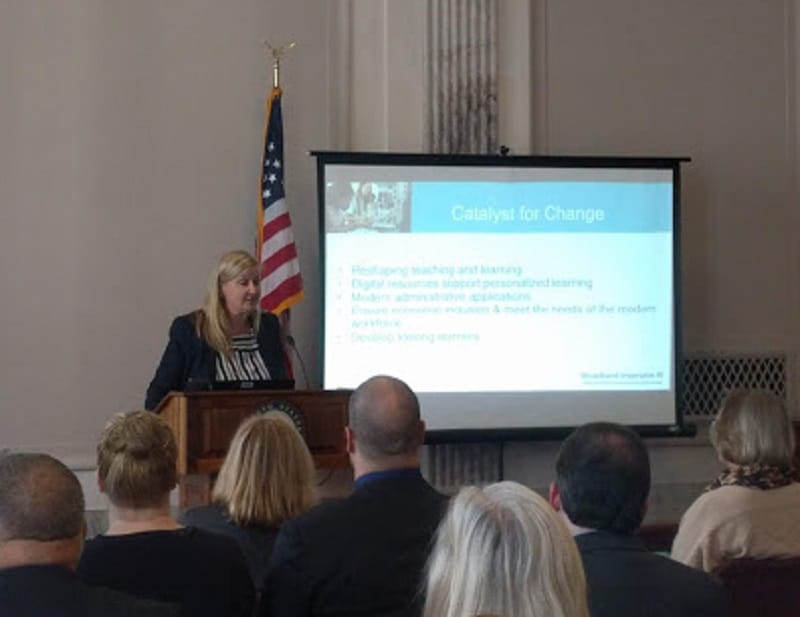State Educational Technology Officials Say Better Broadband Necessary for Pedagogy and Equity
WASHINGTON, November 6, 2019 – High-speed internet access is essential for improving pedagogical approaches and broadband equity, and that means access to devices both at school and at home. Technology disruption is “game changing” for the education sector, said SETDA Deputy Executive Director Chris

WASHINGTON, November 6, 2019 – High-speed internet access is essential for improving pedagogical approaches and broadband equity, and that means access to devices both at school and at home.
Technology disruption is “game changing” for the education sector, said SETDA Deputy Executive Director Christine Fox, deputy executive director of the State Educational Technology Directors Association, which presented their findings at a Capitol Hill event Wedneday. Teachers and students depend on changing technology so that they can receive adequate bandwidth, she said.
Fox described the main recommendations SETDA outlined in its third “Broadband Imperative”report. First, leaders must leverage technology to support student learning experiences in preparation for careers in the digital age.
Of teens, 17 percent don’t have reliable access to a device, Fox said. This is a problem because much of today’s educational material is used with cloud computing. Digital tools such as augmented or virtual reality can help provide personalized learning experiences for students.
To better implement this technological transformation, Fox encouraged schools and districts to strategically a way to support sustained, seamless access to online administrative tools as well as the Internet of Things. By analyzing the recommended peak utilization bandwidth capacity goals and Wide Area Network implementation considerations, she said, districts can develop the best plan that meets current and future needs.
However, Fox added, building these infrastructures requires effective security practices and appropriate funding from the federal and state levels.
Doug Casey, executive director for the Connecticut State Commission for Educational Technology, described how states can demonstrate leadership to support high-speed broadband connectivity.
Eight percent of Connecticut public school students are under the “homework gap,” he said. In other words, about 48,000 students have difficulty completing assignments because they lack internet access at home.
The goal of CET, Casey said, is to ensure the successful integration of technology in Connecticut’s educational facilities. So far, 94 percent of Connecticut public school students have registered Google IDs. These IDs allow them to use Chromebooks for extended learning.
In addition to providing more accessibility, Casey said, the Connecticut Education Network provides state-level cybersecurity protection. There has been a recent spur of Distributed Denial of Service attacks on educational operations, so CEN works to detect and mitigate these threats.
CEN’s work has proved to be beneficial technologically and financially, he said, averaging approximately 24 million in cost avoidance per year. Each technology solution, however, will be different for individual states and geographic locations.










Member discussion